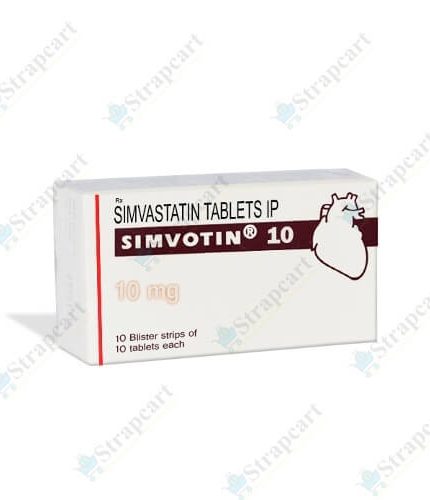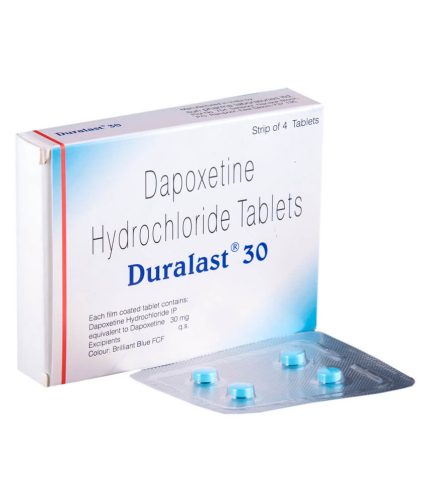Key Point
The Department of Health and Human Services offers exercise guidelines for most healthy adults, recommending 150 minutes of moderate-intensity exercise or 75 minutes of vigorous-intensity exercise per week. It is recommended that this activity be spread out over 4 to 5 days, or that individuals engage in physical activity daily. Furthermore, it is important to reduce extended periods of sitting or lying down and to integrate movement into daily routines to counteract prolonged inactivity.
To attain enhanced health advantages, the recommendations indicate that individuals should strive for 300 minutes or more of moderate aerobic activity every week. Participating in this level of activity may aid in weight loss or the maintenance of weight loss. Nevertheless, even small amounts of physical activity can have beneficial health effects, as brief episodes of activity throughout the day can accumulate and enhance overall well-being.
Individuals are encouraged to strive for a minimum of 30 minutes of moderate physical activity daily. Individuals aiming to lose weight, maintain weight loss, or achieve particular fitness objectives may find it necessary to increase the duration of their exercise sessions.
How Much Physical Activity Is Necessary For Optimal Health?
The U.S. The Department of Health and Human Services provides recommendations concerning physical activity for individuals in the United States. The most recent recommendations are detailed below.
For children and adolescents
It is advised that children aged 6 to 17 engage in physical activity for at least an hour (60 minutes) every day. Although this may appear to be a considerable amount of time, they likely fulfill much of this requirement through their everyday activities, such as recess, physical education classes, or playing with friends after school. The exercise regimen for children should encompass three primary categories:
- Aerobic activity: These exercises increase heart rates and may include running, cycling, or brisk walking. Such activities should form the bulk of their daily physical engagement.
- Muscle-strengthening: This Physical Activity promotes muscle growth and can involve climbing trees, gymnastics, or utilizing playground equipment. Older adolescents may also participate in weightlifting to enhance muscle strength further.
- Bone-strengthening: These activities support bone health and may consist of running, brisk walking, or jumping rope.
For Adults
Adults are encouraged to integrate both aerobic and muscle-strengthening Physical Activity into their weekly fitness regimens. The suggested durations are as follows:
- 2 hours and 30 minutes (150 minutes) of moderate-intensity exercise in conjunction with muscle-strengthening activities, or
- Engage in 1 hour and 15 minutes of high-intensity exercise combined with activities that enhance muscle strength.
Participating in vigorous physical activities elevates the heart rate and quickens breathing, making it challenging to maintain a conversation without pausing for breath. Examples of such activities include:

Additionally, all of the major muscular groups—shoulders, arms, chest, abdomen, back, hips, and legs—should be worked during muscle-strengthening Physical Activity. Examples of these exercises are:
- Weightlifting
- Push-ups
- Sit-ups
- Using resistance bands
- Practicing yoga
To achieve optimal health, it is recommended that adults engage in 5 hours (300 minutes) of moderate exercise or 2 hours and 30 minutes (150 minutes) of vigorous exercise every week.
Physical activity guidelines for adults aged 19 to 64 recommend engaging in some form of physical activity daily. Engaging in physical activity just once or twice a week can greatly lower the likelihood of developing heart disease or experiencing a stroke.
It is recommended to consult with a healthcare provider if you have not engaged in physical activity for an extended period or if you have any medical conditions or concerns. Ensure that the activities you choose and their intensity are appropriate for your fitness level.
Adults Should Aim To
– Engage in strength training exercises that focus on all primary muscle groups, including the legs, hips, back, abdomen, chest, shoulders, and arms, at least two times per week.
Strive to achieve a cumulative total of 150 minutes of moderate-intensity physical activity weekly, or 75 minutes of vigorous-intensity exercise.
– It is advisable to spread your exercise sessions evenly over four to five days each week, or preferably, to engage in physical activity daily. Additionally, reduce the amount of time spent in a seated or reclined position, and break up extended periods of inactivity with various forms of movement.
| Additionally, you can meet your weekly activity goals through:
– Several brief sessions of high-intensity activity
– A mix of moderate, high, and very high-intensity activities.
| These recommendations are also applicable to:
- Individuals with disabilities
- Expectant mothers and new parents
Upon returning to exercise after pregnancy, it is crucial to choose physical activities that correspond to your fitness levels before becoming pregnant. It is recommended to include strength training in your routine.
Following your postnatal examination at 6 to 8 weeks, you may start participating in more intense activities if you feel ready. However, it’s best to stay away from strenuous exercise if you weren’t active before becoming pregnant.
What constitutes moderate aerobic activity?
Engaging in moderate physical activity will raise your heart rate, enhance your breathing rate, and produce a feeling of warmth. A practical measure of moderate intensity is the capacity to hold a conversation, though singing may not be feasible.

| Examples of moderate-intensity activities include:
- Fast walking
- Water aerobics
- Cycling
- Dancing
- Playing doubles tennis
- Mowing the lawn
- Hiking
- Rollerblading
What Defines Vigorous Activity?
Engaging in activities of vigorous intensity will result in heavy and rapid breathing. At this intensity, you will find it challenging to articulate more than a few words without requiring a break to catch your breath.
Generally speaking, engaging in 75 minutes of intense activity per week can yield health advantages comparable to those derived from 150 minutes of moderate exercise. Many moderate activities can be elevated to vigorous levels through increased exertion.
| Examples of vigorous activities include:
- Running
- Swimming
- Cycling at a fast pace or on inclines
- Climbing stairs
- Skipping
- Aerobics
- Gymnastics
- Martial arts
For individuals seeking a moderate to vigorous exercise regimen, the Couch to 5K program is an excellent option. This 9-week running program is designed with beginners in mind.
What Is Classified As A Very Vigorous Activity?
Intense physical activities consist of exercises executed in brief intervals of peak effort, alternating with periods of rest. This form of training is widely referred to as High-Intensity Interval Training.
| Examples of very vigorous activities include:
- Heavy weightlifting
- Circuit training
- Sprinting uphill
- Interval running
- Running up stairs
- Spinning classes
What Activities Are Effective For Muscle Strengthening?
To obtain the health advantages linked to strength training, it is recommended to engage in exercises until a short rest is necessary before resuming. There are various approaches to improve muscle strength, whether at the convenience of your home or a gym.
| Activities that promote muscle strengthening encompass:
- Carrying heavy grocery bags
- Practicing yoga
- Engaging in Pilates
- Performing tai chi
- Lifting weights
- Utilizing resistance bands
- Engaging in bodyweight exercises, including push-ups and sit-ups.
- Participating in strenuous gardening tasks, like digging and shoveling
- Propelling a wheelchair
- Lifting and carrying children
Consider incorporating exercise routines such as strength training videos available in our Fitness Studio.
You may choose to perform muscle-strengthening activities either on the same days as your aerobic exercises or on separate days, based on what is most convenient for you. It is essential to recognize that muscle-strengthening exercises do not necessarily count as aerobic activities; thus, they should be incorporated alongside the advised 150 minutes of aerobic exercise.
Guidelines for a Weekly Workout Routine
| Focus on Intensity:
If your schedule permits only one workout session per week, it is advisable to focus on high-intensity exercises. Such activities resemble power movements and provide significant advantages within a brief period. To make the most of your constrained workout time, strive for short and intense sessions, thereby enhancing the overall effectiveness of your training program.
| Incorporate Variety:
Incorporate various muscle groups to promote comprehensive body strength and fitness. This method ensures that every area of your body is adequately addressed. Regardless of whether your emphasis is on aerobic, strength, or flexibility training, introducing diversity into your regimen will enhance both its engagement and effectiveness.
| Active Lifestyle:
Incorporate physical activity as a regular element of your daily routine. Engaging in an active lifestyle can enhance your week significantly. Choose to use the stairs, enjoy leisurely walks, or partake in enjoyable pursuits such as dancing or sports.
Ensure Adequate Nutrition and Hydration Between Training Sessions
Participating in training sessions twice a day imposes considerable physical strain on the body. To effectively cope with this heightened physical stress, it is crucial to maintain a well-rounded diet and ensure adequate hydration. This includes the intake of balanced meals, nutritious snacks, and sufficient water to enhance workout performance and aid in recovery.
If your adjusted training timetable restricts the time available for meal preparation, it may be beneficial to have healthy options on hand, such as oatmeal, hard-boiled eggs, or energy balls, To streamline the process of providing nourishment to your body.
Final Thoughts |
|
In conclusion, the optimal exercise frequency differs from person to person. Although a single workout per week can provide some advantages, it may not be adequate for all individuals. It is essential to create a Fitness plan that corresponds with your personal goals, lifestyle, and overall well-being. Regardless of whether you opt for weekly sessions or a more frequent schedule, the most important aspect is to ensure consistency and derive pleasure from the process of achieving a healthier and more active way of life. Strapcart.com suggests participating in physical activities or engaging in 75 minutes of vigorous exercise weekly. |











